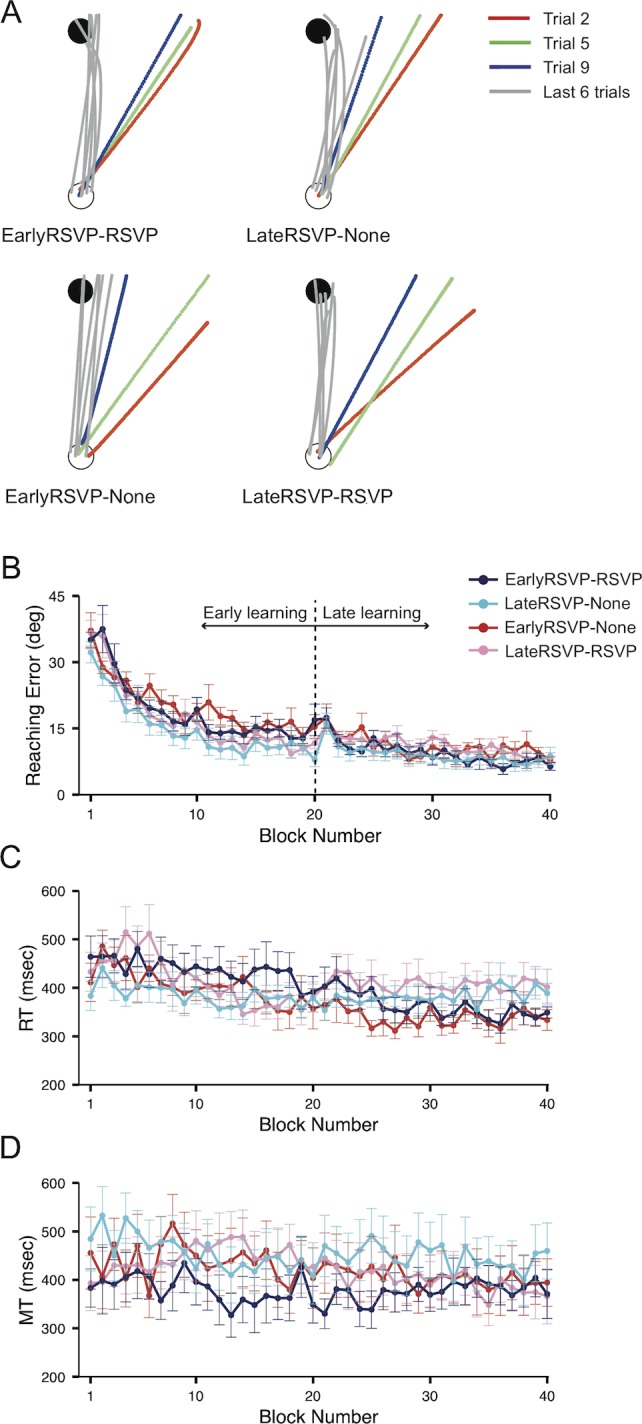Figure 2.

Results of the reaching task in Experiment 1. (A) Reaching trajectories of four representative participants of different groups (EarlyRSVP–RSVP, LateRSVP–None, EarlyRSVP–None, and LateRSVP–RSVP) during the learning phase. All the trajectories are realigned to the 12 o'clock direction. The trajectories of the first three trials are color-coded (red, green, and blue for the second, fifth, and ninth trials, respectively), and the gray lines indicate the trajectories of the last six trials. The trajectories in the beginning of the learning phase deviated from the target (i.e., red, green, blue lines). However, by the end of the learning phase (gray lines), the trajectories became more aligned and straight toward the target, indicating visuomotor learning. (B) Mean reaching errors of the four groups during the learning phase (averaged over blocks of four trials ± SEM: EarlyRSVP–RSVP, N = 12; LateRSVP–None, N = 11; EarlyRSVP–None, N = 11; LateRSVP–RSVP, N = 12). Trial blocks 1–20 are defined as the early-learning phase, and trial blocks 21–40 are defined as the late-learning phase. All groups performed similarly regardless of attentional load. (C) RT (means ± SEM) of the reaching. Regardless of whether they performed the secondary RSVP task during the learning phase or not, the RT of the reaching did not differ across the groups. (D) Mean MT (means ± SEM). Just as with RT, MT did not differ across the groups regardless of whether they performed the secondary RSVP task during the learning phase.
